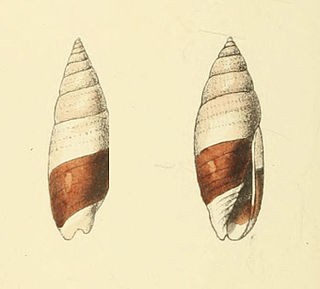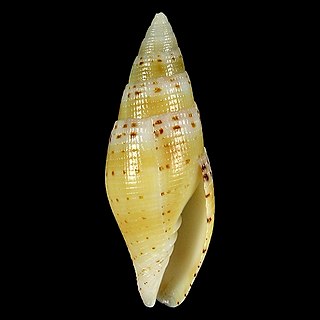
Mitridae, known as mitre shells, are a taxonomic family of sea snails, widely distributed marine gastropod molluscs in the clade Mitroidea.

Scabricola olivaeformis, common name the olive-shaped mitre, is a species of sea snail, a marine gastropod mollusk in the family Mitridae, the miter shells or miter snails.
Scabricola dianneae is a species of sea snail, a marine gastropod mollusk in the family Mitridae, the miters or miter snails.

Scabricola bicolor is a species of sea snail, a marine gastropod mollusk in the family Mitridae, the miters or miter snails.
Scabricola albina is a species of sea snail, a marine gastropod mollusk in the family Mitridae, the miters or miter snails.
Scabricola hayashii is a species of sea snail, a marine gastropod mollusk in the family Mitridae, the miters or miter snails.

Scabricola lorenzi is a species of sea snail, a marine gastropod mollusk in the family Mitridae, the miters or miter snails.
Scabricola sowerbyi is a species of sea snail, a marine gastropod mollusk in the family Mitridae, the miters or miter snails.
Scabricola gilbertsoni is a species of sea snail, a marine gastropod mollusk in the family Mitridae, the miters or miter snails.

Scabricola guttata is a species of sea snail, a marine gastropod mollusk in the family Mitridae, the miters or miter snails.

Swainsonia fissurata, common name : the reticulate mitre, is a species of sea snail, a marine gastropod mollusk in the family Mitridae, the miters or miter snails.
Scabricola barrywilsoni is a species of sea snail, a marine gastropod mollusk in the family Mitridae, the miters or miter snails.
Scabricola caerulea is a species of sea snail, a marine gastropod mollusc in the family Mitridae, the miters or miter snails.
Scabricola condei is a species of sea snail, a marine gastropod mollusk in the family Mitridae, the miters or miter snails.
Scabricola eximia is a species of sea snail, a marine gastropod mollusk in the family Mitridae, the miters or miter snails.

Scabricola geigeri is a species of sea snail, a marine gastropod mollusk in the family Mitridae, the miters or miter snails.
Scabricola backae is a species of sea snail, a marine gastropod mollusk, in the family Mitridae, the miters or miter snails.
Scabricola ivanmarrowi is a species of sea snail, a marine gastropod mollusk, in the family Mitridae, the miters or miter snails.
Scabricola mariae is a species of sea snail, a marine gastropod mollusk, in the family Mitridae, the miters or miter snails.
Scabricola yaekoae is a species of sea snail, a marine gastropod mollusk, in the family Mitridae, the miters or miter snails.






